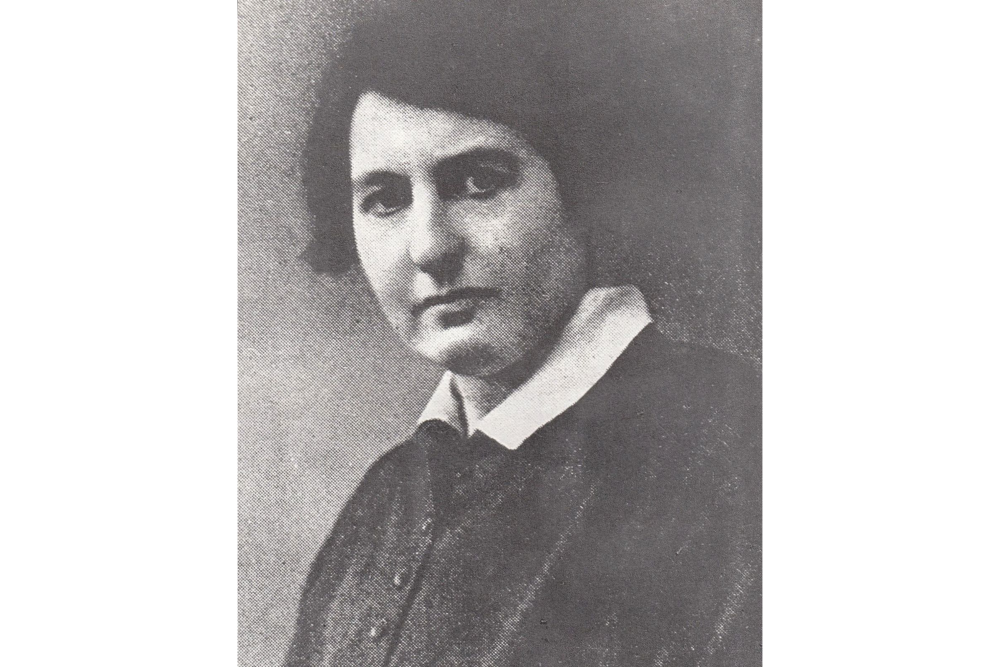- News
- Events
- Oneg Shabbat
- Collections
- Research
- Exhibitions
- Education
- Publishing Department
- Genealogy
- About the Institute
- Bookstore

.png)
Stefania Wilczyńska, 1927, Wikimedia Commons
Stefania Wilczyńska, also known as Mrs. Stefa, was born on 26th May, 1886, into a relatively affluent Jewish family. Her parents, Sara/Salomea née Walfisz and Izaak/Julian Wilczyński, raised her alongside her four siblings. Notably, her brother Stanisław Wilczyński, an engineer, was married to Irena Eliasberżanka, the daughter of Stella and Isaac Eliasberg, both active members of the "Help for Orphans" Society.
Upon completing her junior high school education and courses in childcare, Stefania went abroad to further her education. She studied in Switzerland for some time, but obtained her bachelor's degree, i.e. half-diploma, in Belgium. Quite quickly, she became involved in the work of the "Help for Orphans" Society, whose aim was to support the poorest Jewish children. She was a member of the Society's Care Committee and participated in decisions regarding the support of specific children.
From 1908, she worked at the shelter located at 2 Franciszkańska Street, acquired by the Society just a year earlier. It was there that she met Henryk Goldszmit, a young doctor, writer, and later also an educator, publicly known as Janusz Korczak. In 1912, the "Help for Orphans" Society established an orphans' home at its own premises at 92 Krochmalna Street. Stefania Wilczyńska became the head educator at the institution, nominally headed by Janusz Korczak. However, she repeatedly took over management responsibilities, which was related to Korczak's extensive external activities but also to his trips, for example during World War I, when he was called to the front.
![korczak_wilczynska_zih.jpg [223.61 KB]](https://www.jhi.pl/storage/image/core_files/2024/5/24/fa614a83a9bc23813ea6d33044f3972f/jpg/jhi/preview/korczak_wilczynska_zih.jpg)
Wilczyńska was responsible for matters related to the organization of the institution's daily work. Among other things, she prepared a duty system and maintained contact with pupils who had already left the institution. From the mid-1920s, she was also responsible for young educators (so-called boarders) staying at the Orphanage and gaining their first educational experience there. She was also able to prove herself as an educator in Palestine, which she visited four times. She also served as an inspector and visited various Jewish welfare institutions, sharing her experience.
She never started her own family, although she treated children and boarders from the orphans’ home in a special way. She maintained long and cordial contact with many of them. She treated the children of her former pupils, such as Jarosław Abramow-Newerly, son of her former pupil Barbara Szejnbaum, and Igor Newerly, Korczak's secretary, as grandchildren and allowed them to call her "Grandma Stefa”.
Her writing legacy is quite modest, although many interesting articles authored by her can be found on the pages of the weekly Mały Przegląd’ (The Little Review), which was founded in 1926 by Korczak. For some time, she prepared readers' letters for publication, and over time, while already in Palestine, she herself provided original material published in the form of "Letters from Ein Harod", i.e. from the kibbutz where she spent most of her time.
In the spring of 1939, she returned to Warsaw from Palestine after a several-month stay there, sensing that she would be needed more there. During the first weeks of the war, she organized a first-aid station at 92 Krochmalna Street, and later also a sewing shop. Together with Korczak, other Jewish workers and children, at the end of 1940, she moved to the closed Jewish district, initially to the building of the ‘Maria and Józef Roesler School of Commerce’ at 33 Chłodna Street, and later, in the autumn of 1941, after the correction of the ghetto boundaries, to the building of the Society of Commercial and Industrial Workers at Sienna 16 / Śliska 9. Despite the chance of rescue, she remained in the institution until the very end, caring for the children and colleagues. During the Great Liquidation Action, on 5th August, 1942, together with Korczak, other educators and children, she was taken to the Umschlagplatz, from where she was transported to the German Nazi extermination camp in Treblinka, where she was murdered.
![DZIH E 66_43_2.jpg [182.65 KB]](https://www.jhi.pl/storage/image/core_files/2024/5/24/0e3155d9d6c8862f82710fd22c046324/jpg/jhi/preview/DZIH%20E%2066_43_2.jpg)
In 1947, Stefania Wilczyńska was posthumously awarded the Silver Cross of Merit for her significant achievements in the field of child-care. For years, however, the story of her life was obscured by the story of Janusz Korczak.
For many, he became the clearest symbol of a loyal guardian who remained faithful to his charges until the end. Fortunately, in recent years, the figure of Stefania Wilczyńska, as well as other women, social activists, educators and carers, has been increasingly present in the story of the history of work for the most needy.